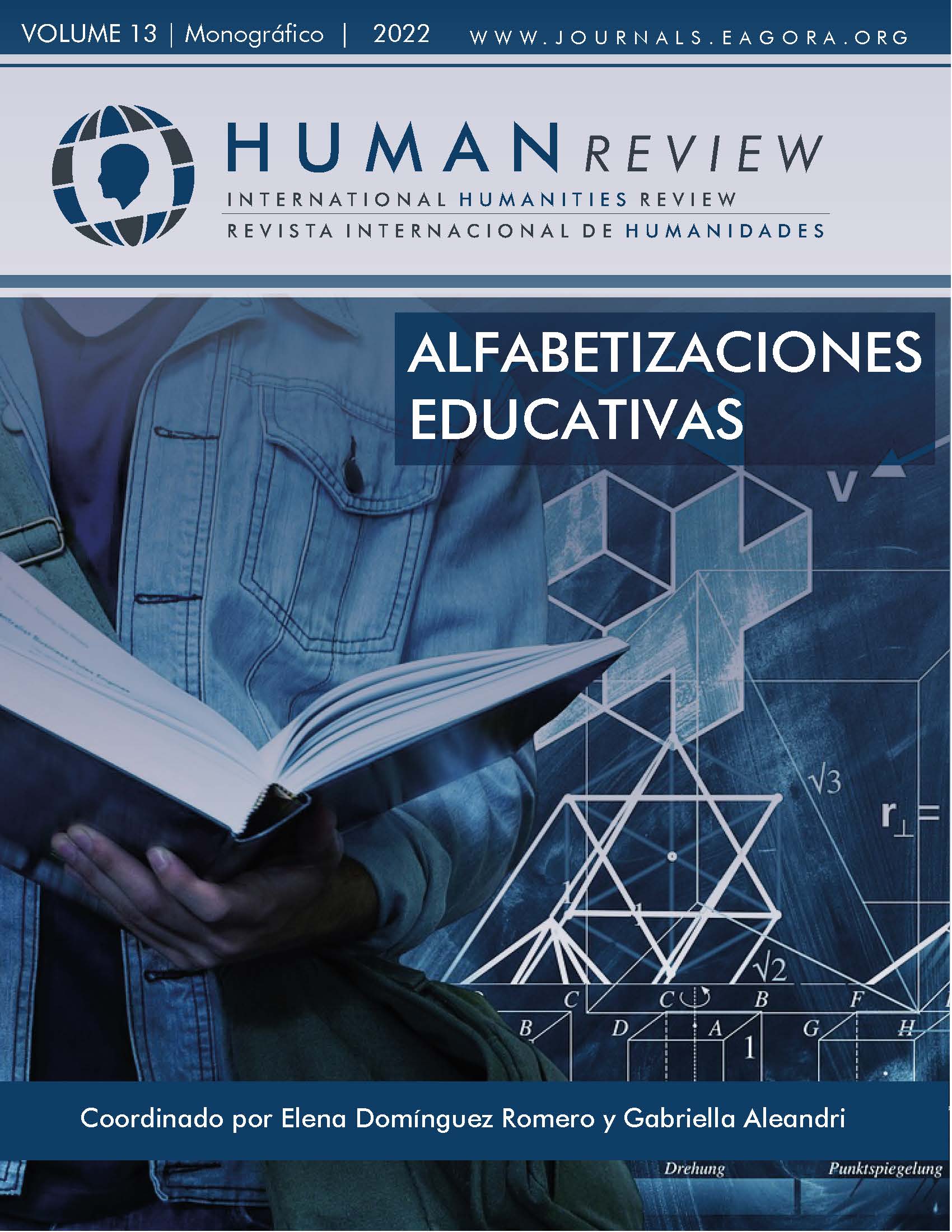Residual post-pandemic ICT literacy in higher education
The case of foreign language teachers and students in Japan
Keywords:
ICT Literacy, University Teaching Methodology, Foreign Language Teaching, Post-pandemic Education, Virtual Teaching Resources, Online Education, Higher Education MethodologyAbstract
The COVID-19 pandemic forced higher educational institutions to an emergent transition to online education, which required that teachers and students were ICT literate enough to continue with their curricula. As most universities in Japan have already transitioned back to face-to-face lessons, this study aimed to analyze the process of acquisition and use of ICT knowledge in a pre, mid and post-pandemic scenario. Findings showed a drastic gap of ICT literacy between teachers and students. However, results suggest that the acquired ICT knowledge remained and is currently being used in a face-to-face or hybrid environment.
References
Al-Ansi, A. M., Garad, A. & Al-Ansi, A. (2021). ICT-based learning during COVID-19 outbreak: Advantages, opportunities and challenges. Gagasan Pendidikan Indonesia, 2(1), 10-26. http://dx.doi.org/10.30870/gpi.v2i1.10176
Allen, J., Rowan, L. & Singh, P. (2020). Teaching and teacher education in the time of COVID-19. Asia-Pacific Journal of Teacher Education, 48(3), 233–236. https://doi.org/10.1080/1359866x.2020.1752051
Baticulon, R., Sy, J., Alberto, N., Baron, M., Mabulay, R., Rizada, L., Tiu, C. Clarion, C. & Reyes, J. (2021). Barriers to online learning in the time of COVID-19: A national survey of medical students in the Philippines. Medical Science Educator, 31(2), 615–626. https://doi.org/10.1007/s40670-021-01231-z
Campos, O. (2019). Phonological Awareness in Foreign Language Learning: Japanese Learners’ articulatory accuracy of Spanish liquids [Doctoral Dissertation]. Tohoku University. http://hdl.handle.net/10097/00126453
Cole, A., Lennon, L. & Weber, N. (2019). Student perceptions of online active learning practices and online learning climate predict online course engagement. Interactive Learning Environments, 29, 1-15. https://doi.org/10.1080/10494820.2019.1619593
Faust, J. & Paulson, D. (1998). Active Learning in the College Classroom. Journal on Excellence in College Teaching, 9(2), 3-24. https://www.asec.purdue.edu/lct/hbcu/documents/Active_Learning_in_College_Classrooms.pdf
Eto, Y. (2021). Students’ behaviors and perceptions using an LMS. Accents Asia, 14(1), 28-3.
Gonzalez, T., de la Rubia, M., Hincz, K., Comas-Lopez, M., Subirats, L., Fort, S. & Sacha, M. (2020). Influence of COVID-19 confinement on students’ performance in higher education. PLoS ONE, 15(10). https://doi.org/10.1371/journal.pone.0239490
Izumi, T., Sukhwani, V., Surjan, A. & Shaw, R. (2021). Managing and responding to pandemics in higher educational institutions: initial learning from COVID-19. International Journal of Disaster Resilience in the Built Environment, 12(1), 51-66. https://doi.org/10.1108/IJDRBE-06-2020-0054
JapanGov. (2021, April 15). ICT in Schools Equips Students with Life Skills for Digital Era. Kizuna. https://www.japan.go.jp/kizuna/2021/04/ict_in_schools.html
Japanese Ministry of Education, Culture, Sports, Science, and Technology (MEXT) (2011). The vision for ICT in education: Toward the creation of a learning system and schools suitable for the 21st century. https://bit.ly/3OMiZLS
Japanese Ministry of Education, Culture, Sports, Science, and Technology (MEXT). (2022a). Ryō wa 4-nendo zenki no daigakunado ni okeru jugyō no jisshi hōshin-tō ni kansuru chōsa no kekka ni tsuite [Implementation policy of classes at universities in the first half of 2022, survey report]. https://www.mext.go.jp/content/20220603-mxt_kouhou01-000004520_02.pdf
Japanese Ministry of Education, Culture, Sports, Science, and Technology (MEXT) (2022b). Shingata koronauirusukansenshou taisaku no kihon-teki taisho hōshin no henkō oyobi nōkō sesshoku-sha no tokutei ni kakaru toriatsukai no henkō-tō ni tsuite [Changes in the basic coping policies for the new coronavirus infectious disease and changes in the identification of close contacts]. https://www.mext.go.jp/content/20220524-mxt_kouhou01-000004520_01.pdf
Kavrayıcı,C. & Kesim, E. (2021). School management during the Covid-19 pandemic: A qualitative study. Kuram ve Uygulamada Eğitim Yönetimi, 27(1), 1005-1060. https://doi.org/10.14527/kuey.2021.004
Kennedy, C. A. (2000). What influences student learning in an online course. (ED466238). ERIC. https://files.eric.ed.gov/fulltext/ED466238.pdf
Kruse, S. D., Hackmann, D. G. & Lindle, J. C. (2020). Academic Leadership during a Pandemic: Department Heads Leading With a Focus on Equity. Frontiers in Education, 5, 614641. https://doi.org/10.3389/feduc.2020.614641
Lemay, D. J., Bazelais, P. & Doleck, T. (2021). Transition to online learning during the COVID-19 pandemic. Computers in human behavior reports, 4, 100130. https://doi.org/10.1016/j.chbr.2021.100130
Mentzer, G. A., Cryan, J. & Teclehaimanot, B. (2007). Two peas in a pod: A comparison of face-to-face and Web-based classrooms. Journal of Technology and Teacher Education, 16(2), 233-246. http://www.learntechlib.org/p/19863/
Mielgo-Conde, I.; Seijas-Santos, S.; Grande-de-Prado, M. Review about Online Educational Guidance during the COVID-19 Pandemic. Education Science 2021, 11(8), 411. https://doi.org/10.3390/educsci11080411
Muñoz-Najar, A., Gilberto, A., Hasan, A., Cobo, C., Azevedo, J.P. & Akmal, M. (2021). Remote Learning during COVID-19: Lessons from Today, Principles for Tomorrow. World Bank Group. https://bit.ly/3I8Kg8y
Mpungose, C.B. (2020). Emergent transition from face-to-face to online learning in a South African University in the context of the Coronavirus pandemic. Humanities & Social Sciences Communications, 7(113). https://doi.org/10.1057/s41599-020-00603-x
Murakami, C.V.T. (2016). Japanese university students and learning management systems. Learning Learning, 23(2), 26-36. https://ld-sig.org/wp-content/uploads/2016/10/Article-4-Murakami.pdf
Nora, A. & Snyder, B. P. (2008). Technology and higher education: The impact of E-learning approaches on student academic achievement, perceptions and persistence. Journal of College Student Retention: Research, Theory & Practice, 10(1), 3–19. https://doi.org/10.2190/CS.10.1.b.
NHK (2022). Nippon kokunai no wakuchin sesshu joukyou [Vaccination Status in Japan]. NHK News Web. https://www3.nhk.or.jp/news/special/coronavirus/vaccine/progress/#mokuji1
Paudel, P. (2021). Online education: Benefits, challenges and strategies during and after COVID-19 in higher education. International Journal on Studies in Education, 3(2), 70-85. https://doi.org/10.46328/ijonse.32
Pena-Levano, L. M. & Melo, G. (2022). Adaptation of Teaching Strategies during the COVID-19 Pandemic. Applied Economics Teaching Resources, 4(1), 12-33. https://doi.org/10.22004/ag.econ.320045
Rutson-Griffiths A. (2014). The paperless classroom: Pros and cons. The Language Teacher: JALT Publications 38(2), 43-45. https://doi.org/10.37546/JALTTLT38.2
Sathishkumar, V., Radha, R., Saravanakumar, A.R., Mahalakshmi, K. (2020). E-Learning during Lockdown of Covid-19 Pandemic: A Global Perspective. International Journal of Control and Automation 13(4), 1088–1099. http://sersc.org/journals/index.php/IJCA/article/view/26035
Sim, W. (2020, January 16). Japan confirms first case of infection from Wuhan coronavirus; Vietnam quarantines two tourists. The Straits Times. https://bit.ly/3ukh1Kl
Snyder, K. (2001). An assessment of the role of computer technology in the classroom. (ED453727). ERIC. https://files.eric.ed.gov/fulltext/ED453727.pdf
Tang, Y., Chen, P., Law, K., Wu, C., Lau, Y., Guan, J., He. D. & Ho, G.T.S. (2021). Comparative analysis of Students’ live online learning readiness during the coronavirus (COVID-19) pandemic in the higher education sector. Computers & Education, 168, 104211. https://doi.org/10.1016/j.compedu.2021.104211
Downloads
Published
Issue
Section
License
All articles are published under an Attribution-NoDerivatives 4.0 International (CC BY-ND 4.0) license. Authors retain copyright over their work.

